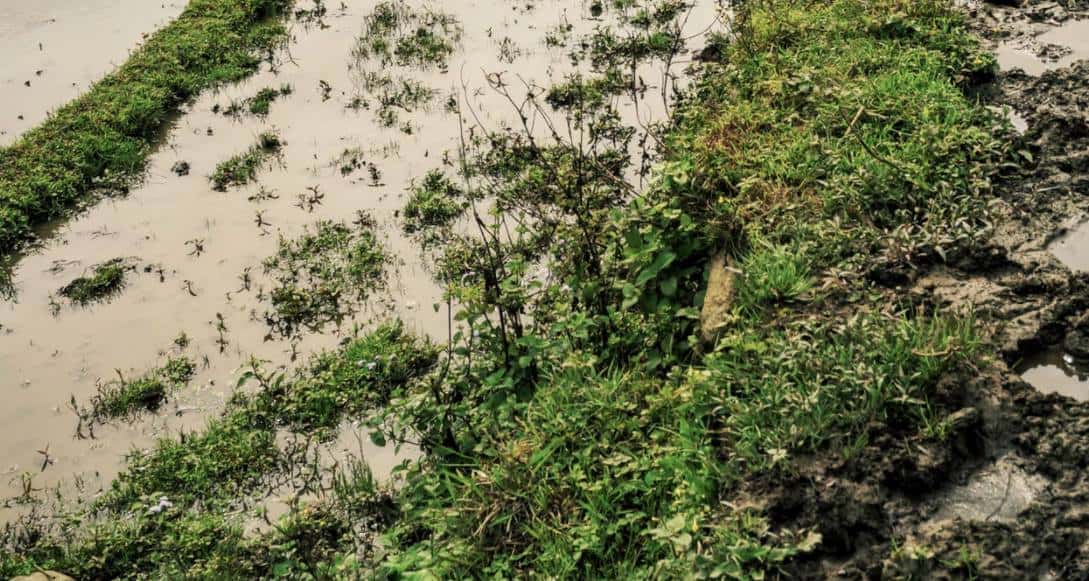Water from rainfall or snowmelt is typically absorbed into the ground. However, sometimes when rainfall is particularly heavy or the ground is already saturated, water can’t be absorbed quickly enough, causing it to pool. If this happens, it can create serious problems for homeowners and their lawns. When water begins to collect, landscape drains are the most common and effective solution.
When Water Collects
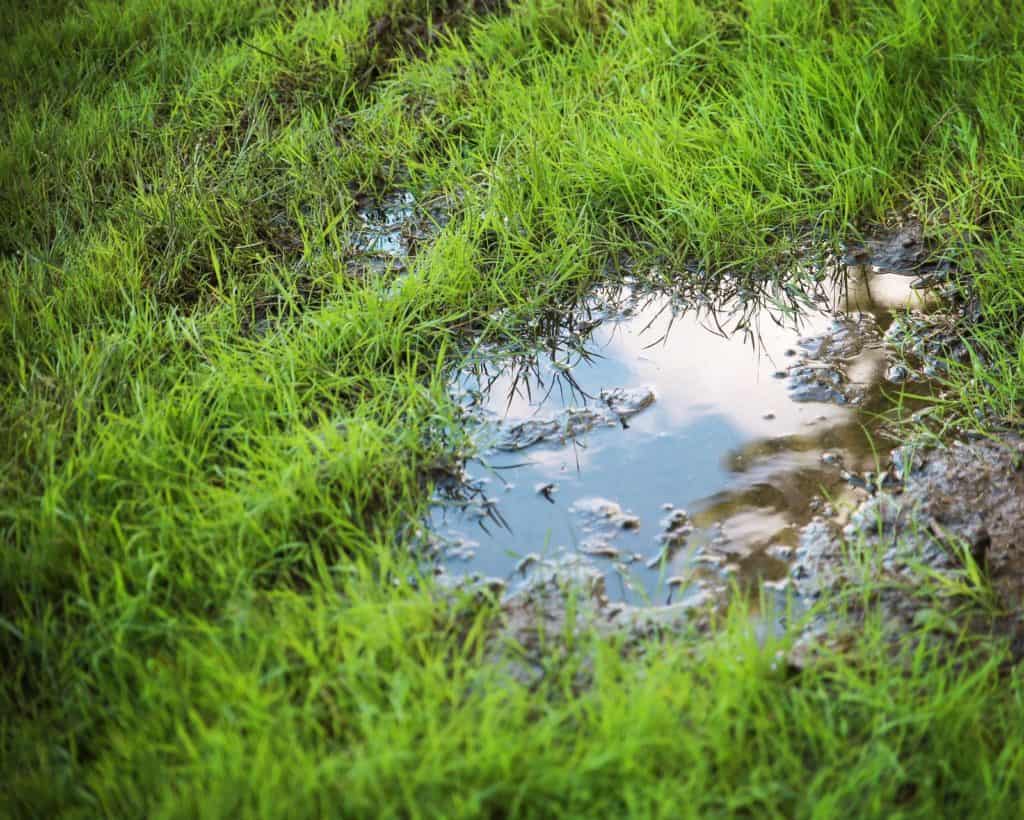
Many problems can result from improper drainage. Standing water can breed mosquitoes and bacteria. Overhydration can kill landscaping and cause soil erosion. If moisture settles in or around your foundation, serious damage can occur to the structure of your home and even wreak havoc on interior finishes. Ultimately, poor drainage can lead to serious and expensive problems in and around your home.
Learn More: How to Identify Landscape Drainage Issues
What Causes Drainage Problems?
There are a number of possible reasons water can collect on your property. Figuring out the root of the problem will lead you to the best drainage solution for your situation.
Improper Grading
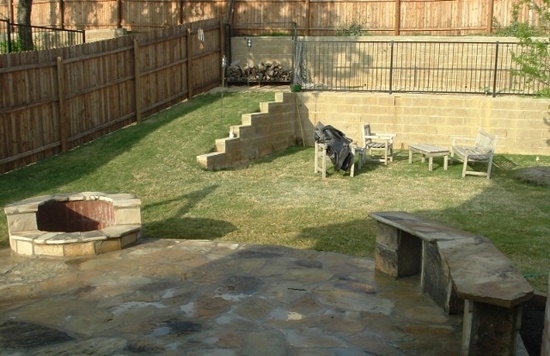
The elevation of the slab of your home should be considered when designing your property. Water should always run away from the foundation of your house, not pool near or move toward it.
Depressions
A depression in your yard, whether natural or manmade, can provide the perfect place for water to collect. When this happens, your lawn can turn into a swampland pretty quickly, creating a breeding ground for bacteria and mosquitos and ruining your landscaping.
Patios
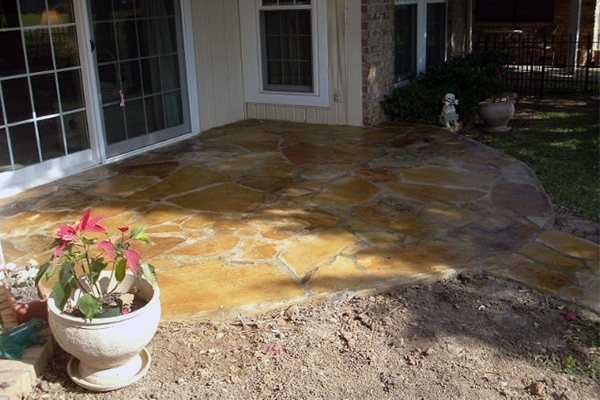
Hardscape surfaces like patios, pool decks, and walkways will also need to be properly graded in order to prevent water from collecting or running toward the house.
Poorly Installed Gutters
If your home’s gutters are in poor
Plant Beds
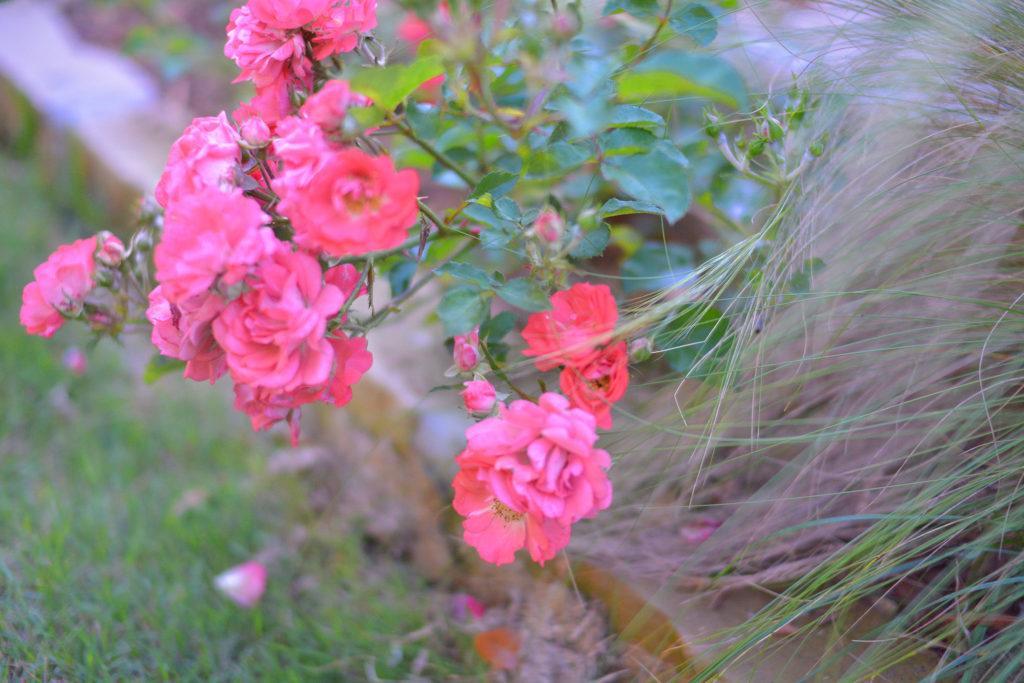
If flower beds are planted too densely, they can impede the flow of water. If water isn’t allowed to flow naturally, it will chart a new course — likely not one you want.
Poorly Maintained Drainage
It’s possible that your property already has a drainage solution in place. But if tree roots grow into drain passages or dirt and silt collect, your system won’t work properly.
How to Fix Your Drainage Problems
Once you understand how drainage problems happen, you’re in a better position to find a solution. Some answers are a quick fix that the average homeowner can manage themselves. Other solutions, however, should probably be left to the professionals. Be honest with yourself about your abilities, resources, time and energy before undertaking any home improvement project. And don’t be afraid to ask for help.
Regrading
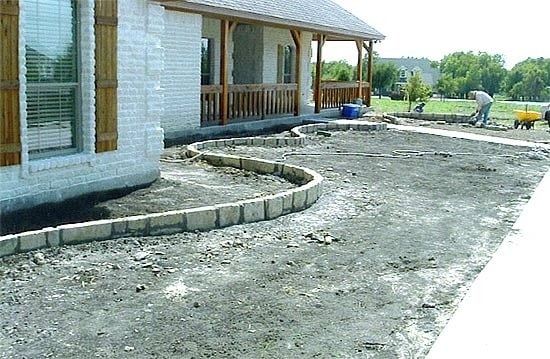
Adjusting the grade of your lawn requires an architect, and is something that should definitely be left to the pros. The new grading should move water away from your home and ensure you aren’t directing water to your neighbor’s property.
Learn More: Regrading 101
French Drain
A French drain is essentially a perforated pipe wrapped in fabric to prevent debris from causing a clog. It’s set into a gravel trench to help remove water from overly saturated areas in your yard.
Corrugated Pipe
When well-installed gutters aren’t doing enough to direct water away from your house, attaching a corrugated pipe can help. The pipe can be buried in the ground to send water toward a downward slope, or even to a nearby stream if possible.
Retaining Walls
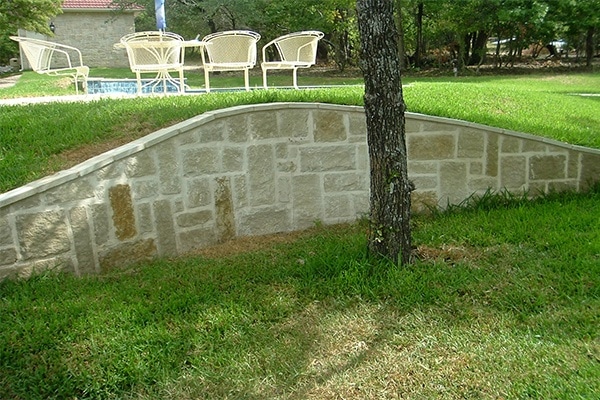
Retaining walls, when installed properly, can hold back soil and even help block or redirect water. To ensure they function properly, they should be installed by a professional.
Cleaning Landscape Drains
You may already have a drainage system in place, but if plants or roots have interfered, or dirt and debris have settled in, they may not be working correctly. You might only need a thorough cleaning for a drainage system as good as new.
Learn More: How to Clean Landscape Drains
Excess water in your landscaping can cause serious problems for your home and property. Identifying the cause and implementing the right solution could save you from enormous expenses down the road. Whether you tackle it yourself or turn to the professionals, an investment today will save you from distress in the future.

